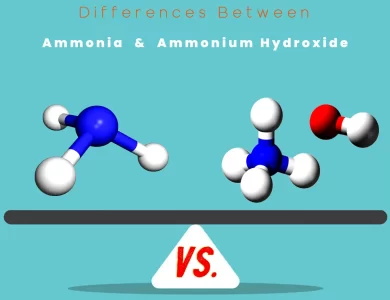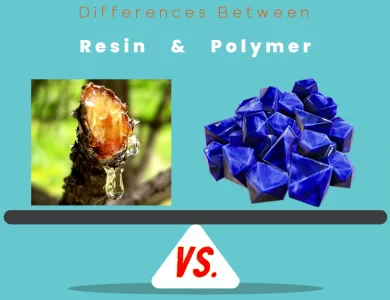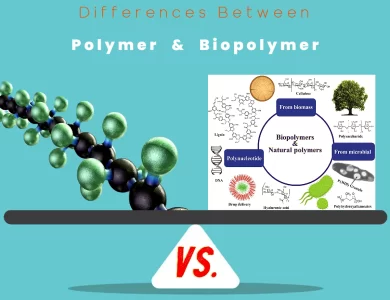Science and Nature
In this engaging corner of knowledge, we embark on a fascinating journey to explore the intricacies and distinctions between various terms, concepts, and phenomena that shape our understanding of the world around us. Join us as we unlock the secrets behind scientific theories, ecological wonders, and so much more.
-

Ammonium Hydroxide vs Ammonia
In the world of chemicals, subtle distinctions can lead to significant differences in properties, applications, and safety considerations. Two such compounds that often cause confusion are ammonia and ammonium hydroxide. While they share a similar pungent odor, they are not the same, and understanding their disparities is crucial, especially when it comes to handling and applications. Ammonia (NH3): This compound is a colorless gas known for its sharp, suffocating smell. It's widely used in various industries, from agriculture as a key component of fertilizers to household cleaning products. Ammonia is also a vital player in industrial refrigeration systems and even finds application in adjusting the pH of solutions. Ammonium Hydroxide (NH4OH): In contrast, ammonium hydroxide is not a standalone compound but rather a liquid solution created by dissolving ammonia gas in water. While it retains that unmistakable ammonia odor, it's in a different physical state. Ammonium hydroxide has diverse applications, from being a cleaning agent in households and industries to serving as a reagent in laboratories. It even plays a role in the food industry for pH adjustment in certain products. Understanding the differences between these two chemicals is not just a matter of semantics but a matter of safety and efficacy in various applications. Whether you encounter them while cleaning your home or in industrial processes, knowing their unique characteristics is essential for making informed decisions and ensuring safe practices.
-

Global Warming vs Ozone Depletion
In the ongoing battle to protect our planet's environment, two critical concerns take the center stage: ozone depletion and global warming. While they may seem interconnected, these environmental issues have unique characteristics that set them apart. Ozone depletion primarily stems from ozone-depleting substances (ODS), leading to the infamous ozone hole and increased UV radiation. Global warming, on the other hand, is driven by greenhouse gas emissions, resulting in rising temperatures, extreme weather events, and broader climate changes. The spatial and temporal scales of these issues differ significantly. Ozone depletion manifests seasonally, with the Antarctic ozone hole as a prime example, while global warming unfolds over decades and affects the entire planet. Both concerns require international cooperation and individual actions to mitigate their impacts. Join us as we delve deeper into the key differences between ozone depletion and global warming, understanding their causes, impacts, and the pivotal role you can play in preserving our planet's future.
-

German Shepherd vs Husky
When it comes to choosing a canine companion, the decision often boils down to individual preferences and lifestyle. Two popular breeds that frequently capture the hearts of dog lovers are the German Shepherd and the Husky. While both are remarkable in their own right, they exhibit striking differences in various aspects that are essential to consider before bringing one into your home. Origins and Temperament: German Shepherds, originally from Germany, are renowned for their intelligence, loyalty, and protective instincts. They were bred for herding and working purposes, making them diligent and trustworthy companions. In contrast, Huskies hail from Siberia, Russia, and have a friendly, independent nature. They are characterized by their striking blue or multicolored eyes and are known for their sociable disposition. Physical Attributes: German Shepherds are medium to large-sized dogs with a well-proportioned body, erect ears, and a bushy tail. Their coat is typically tan and black. On the other hand, Huskies are medium-sized dogs with triangular ears and a plume-like tail that curls over their back. They have a double coat with various coat colors, including black, gray, red, and agouti. Exercise Needs: German Shepherds are active and require regular exercise and mental stimulation to stay content. They excel in activities like obedience training and agility. Huskies, however, have very high energy levels and need ample exercise, making them ideal companions for those who enjoy long hikes, running, and outdoor adventures. Family Compatibility: Both breeds can be suitable for families, but German Shepherds tend to be more protective, making them good guard dogs. Huskies are generally friendly and get along well with children and other dogs, making them a great fit for families looking for a sociable pet. Training and Intelligence: German Shepherds are highly intelligent and trainable, often excelling in obedience and problem-solving. Huskies, while intelligent,…
-

Difference Between Wolf and Husky
Discovering the differences between a wolf and a Husky is an intriguing journey into the world of canines. These two creatures may share a common ancestry, but their characteristics and roles in our lives diverge significantly. Wolves, often regarded as iconic symbols of the wild, stand in stark contrast to the domesticated and beloved Siberian Husky. One of the most noticeable distinctions lies in their physical attributes. Wolves are formidable, with a robust build, while Huskies are smaller and more agile, bred for endurance in harsh climates. Size matters, with wolves weighing between 70 to 180 pounds, compared to Huskies at 35 to 60 pounds. Their coats also reveal differences; wolves typically display earthy tones to blend into their habitats, whereas Huskies exhibit a colorful array of fur with striking blue eyes. Behavior and temperament further set them apart. Wolves are elusive, territorial, and often cautious around humans, particularly in the wild. In contrast, Huskies are known for their sociable and friendly nature, thriving in family settings. While wolves rely on complex communication systems and pack hierarchies, Huskies express themselves through body language and vocalizations like barking and howling. Diet, exercise needs, and legal considerations also vary significantly between these two canines. Wolves are carnivores with a high prey drive, requiring vast territories for hunting. Huskies, on the other hand, demand regular exercise, enjoy dog sports, and are suitable for domestic settings. As you delve into the key differences between wolves and Huskies, you'll gain insights into which one aligns better with your lifestyle and preferences. Whether you seek a wild companion or a loyal family pet, understanding these distinctions is crucial to making an informed choice.
-

Alaskan Malamute vs Alaskan Husky
When it comes to choosing a dog breed, the Alaskan Malamute and the Alaskan Husky often find themselves in the spotlight. These northern breeds share a common heritage of enduring harsh Arctic conditions and working alongside humans. However, beneath the surface, they have distinct characteristics that set them apart. Origin: The Alaskan Malamute, named after the native Mahlemut people, has a rich history as a large and sturdy breed originally bred for hauling heavy loads. In contrast, the Alaskan Husky, not officially recognized as a distinct breed, emerged from the world of sled dog racing and was created by crossing various northern dog breeds, including Siberian Huskies and Alaskan Malamutes. Physical Traits: Alaskan Malamutes are known for their imposing size, dense double coat, and plume-like tail carried over the back. They typically weigh over 85 pounds. On the other hand, Alaskan Huskies exhibit more variability in size, a sleeker build, and shorter coats, with weight ranging from medium to large. Temperament: Malamutes are characterized by their friendly and affectionate nature, often earning them the title of "gentle giants." They are loyal companions but can be independent. In contrast, Alaskan Huskies are highly energetic and independent thinkers, excelling in activities like sled racing. Grooming Needs: Malamutes require regular grooming due to their dense coat and year-round shedding. Huskies have a shorter and less dense coat, resulting in less frequent grooming. Exercise Requirements: Malamutes need daily exercise and mental stimulation to thrive, while Huskies are high-energy dogs that thrive with active owners, making them ideal for sports and outdoor activities. Ultimately, your choice between these breeds should align with your lifestyle, climate, and willingness to meet their unique needs. Whether you opt for the gentle giant Malamute or the spirited athlete Husky, both breeds have the potential to become cherished companions, offering…
-

Alaskan Malamute vs Siberian Husky
When it comes to choosing the perfect canine companion, the differences between dog breeds can play a significant role in your decision-making process. Two Northern dog breeds that often capture the hearts of dog enthusiasts are the Alaskan Malamute and the Siberian Husky. While they share some similarities due to their Arctic origins, they also exhibit distinct characteristics that set them apart. One of the most noticeable differences between these breeds is their size. Alaskan Malamutes are known for their sheer power and strength, standing at 25 to 28 inches tall and weighing between 85 to 100 pounds or more for males. Females are slightly smaller but still impressively robust. On the other hand, Siberian Huskies are more compact, with males standing at 21 to 23.5 inches and weighing between 45 to 60 pounds. Their smaller stature makes them a more suitable choice for individuals or families with limited space. Temperament is another area where these breeds diverge. Alaskan Malamutes are gentle giants known for their loyalty and affection toward their owners. However, they can be independent and stubborn at times, requiring patient training. In contrast, Siberian Huskies are outgoing and playful, often described as "free spirits." They are generally more eager to please, making them relatively easier to train. Exercise needs are yet another point of distinction. Alaskan Malamutes have a high demand for physical activity, thriving in environments where they can engage in strenuous activities like hiking and weight-pulling. Siberian Huskies, although also active, are more adaptable to various living situations, including apartments, as long as they receive daily exercise and mental stimulation. These are just a few of the key differences between Alaskan Malamutes and Siberian Huskies. To make the right choice for your lifestyle and preferences, it's crucial to delve deeper into their characteristics and consider…
-

Siberian Husky vs Alaskan Husky
Siberian Huskies and Alaskan Huskies, while both Northern dog breeds, exhibit distinct differences in origin, characteristics, and suitability for various lifestyles. Siberian Huskies trace their roots to Siberia and were initially bred by the Chukchi people as versatile working dogs. Renowned for their striking appearance with distinct coat colors and piercing eyes, Siberian Huskies have become popular family pets. They are known for their friendly and outgoing nature, making them suitable for households seeking an active and sociable canine companion. On the other hand, Alaskan Huskies are not a formally recognized breed but rather a product of selective breeding by mushers in Alaska. These dogs are bred for one primary purpose: sled dog racing. Their appearance varies significantly due to their mixed lineage, and they are highly task-oriented, excelling in activities demanding speed and endurance. When it comes to exercise needs, Alaskan Huskies require even more rigorous workouts than Siberian Huskies due to their racing background. While Siberian Huskies shed seasonally, Alaskan Huskies have diverse grooming needs based on their individual coat characteristics. Whether you seek a striking family pet or a high-performance working dog, understanding these key differences between Siberian Huskies and Alaskan Huskies will help you make an informed choice that aligns with your lifestyle and preferences.
-

Polymer vs Resin
In the realm of materials science, the choice between resin and polymer can significantly impact the success of a project. While these terms are sometimes used interchangeably, they refer to distinct classes of materials with unique characteristics and applications. Resin encompasses a diverse range of materials, including both natural and synthetic compounds. What sets resins apart is their adhesive nature and versatility in coatings and encapsulation. They can be found in everything from woodworking adhesives to the protective coatings on your smartphone screen. Resins are often praised for their chemical resistance and thermal stability, making them valuable in various industrial settings. Polymers, on the other hand, are a more extensive category of materials characterized by the repetition of monomer units. This repeating structure grants polymers their remarkable diversity, from everyday plastics like polyethylene to high-strength composites used in aerospace. Polymers excel in applications where flexibility, lightweight properties, and elasticity are crucial. Intriguingly, some polymers can also function as resins when adhesive or coating properties are required, blurring the lines between these two material classes. Therefore, understanding their differences is paramount in selecting the right material for specific tasks, whether it's crafting artful creations or engineering cutting-edge technologies.
-

Biopolymer vs Polymer
In the ever-evolving realm of materials science, the distinction between polymers and biopolymers is a pivotal one. These substances, although related by name, possess vastly different characteristics, sources, and environmental impacts. Understanding these differences is not only essential for scientists and engineers but also for anyone interested in the sustainable future of our planet. Polymers, often synonymous with synthetic plastics, are derived from petrochemicals through intricate chemical processes. These versatile materials have become ubiquitous in our daily lives, finding applications in countless industries. From the plastic bottles that hold our beverages to the insulation in our homes, polymers are the workhorses of modern manufacturing. However, their dominance comes at a price - their environmental footprint. Many synthetic polymers are non-biodegradable, contributing to long-lasting pollution and resource depletion. Biopolymers, on the other hand, are the natural counterparts. These materials, as the name suggests, originate from living organisms. They include substances like cellulose, found in plant cell walls, and DNA, the genetic code of all life forms. What sets biopolymers apart is their sustainable nature. They are often derived from renewable biological sources and possess the remarkable ability to biodegrade, returning to the Earth without leaving a lasting mark. This eco-friendliness has fueled their adoption in various eco-conscious industries, such as biodegradable packaging and regenerative medicine. As we venture deeper into the realm of polymers and biopolymers, we'll uncover their composition, sources, properties, and applications. We'll also explore the environmental impact, recycling challenges, cost considerations, and regulatory aspects that shape these materials' roles in our world. Join us on this enlightening journey to grasp the "Differences Between Polymer vs Biopolymer" and their significance in the grand tapestry of materials science.
-

Monomer vs Polymer
Polymers and monomers may sound like scientific jargon, but they play pivotal roles in our daily lives. At their core, these terms encapsulate the fundamental building blocks of matter, with unique properties and applications. In our journey to comprehend the distinctions between polymers and monomers, we delve into their molecular structures, chemical properties, and real-world significance. Polymers, those long chains of repeating monomer units, are the unsung heroes of modernity. From the synthetic fibers in our clothes to the plastic containers that store our food, polymers are everywhere. They offer versatility that can be tailored to meet specific needs, making them the backbone of various industries. Monomers, on the other hand, are the precursors, the individual molecules that join together to form polymers. Think of them as the bricks in the construction of molecular architecture. While smaller in size, monomers wield precision and control in chemical synthesis, allowing scientists and engineers to craft materials with exacting specifications. In this guide, we explore the key differences between polymers and monomers, shedding light on their distinct roles in chemistry, industry, and our evolving understanding of materials. From their size and structure to their diverse applications and environmental impacts, we navigate the fascinating world of these chemical entities. Join us as we embark on an enlightening journey to unravel the mysteries of Polymer vs Monomer.









